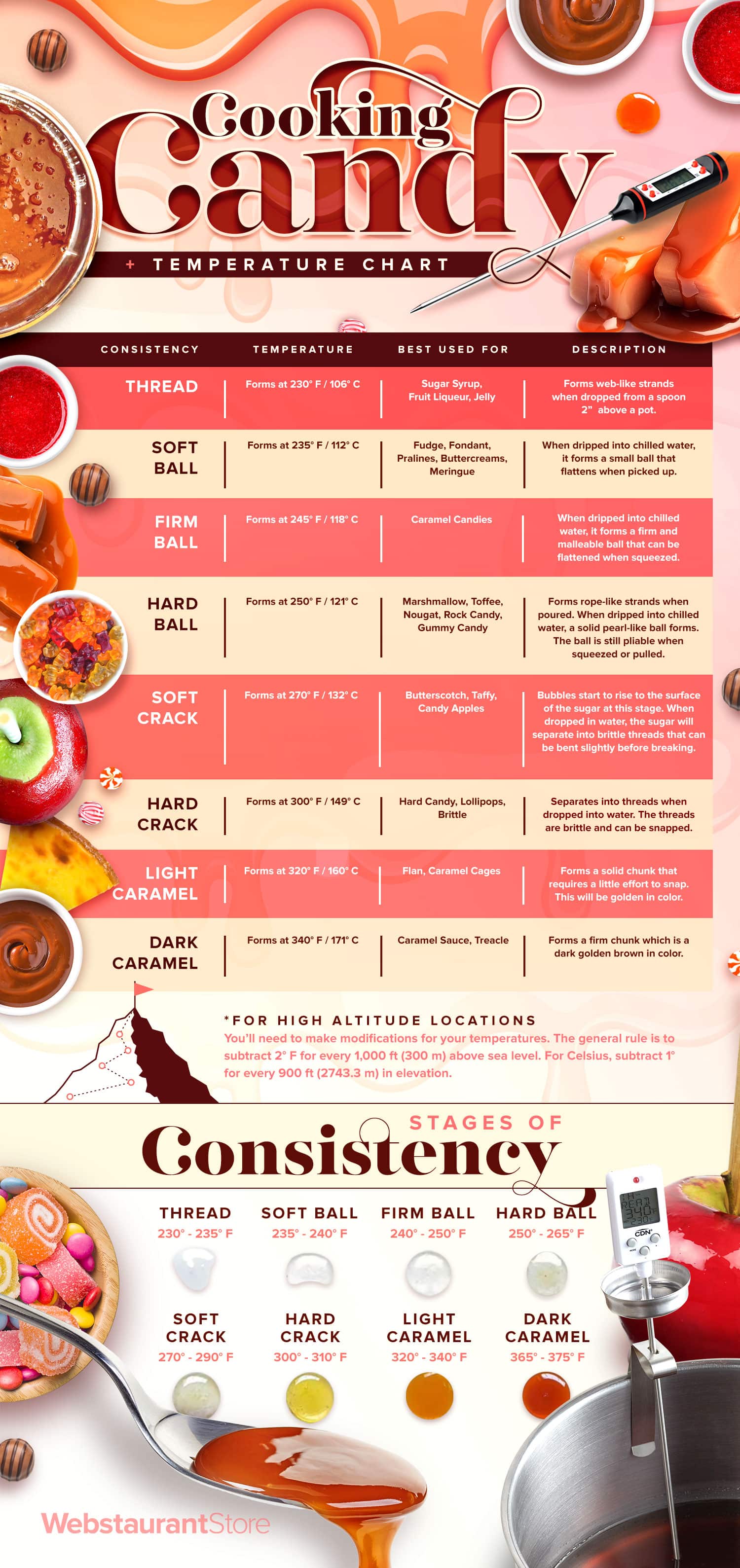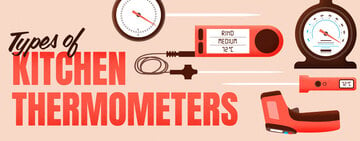Understanding Candy Temperatures
Learning how to properly cook up confections is essential if you’re planning to start a candy-making business. As you create an eye-catching and mouth-watering candy menu, you’ll learn that preparing these sweets requires some precision in the cooking process. The temperature of your sugar can completely alter the consistency you need to produce delicious treats such as caramels and lollipops. That is where a candy temperature chart comes in handy. Below, we’ll explain the difference between terms like soft crack and firm ball and provide you with a sugar temperature chart you can use in your kitchen.
Shop All Candy Making SuppliesCandy Making Temperatures
When making candy, the sugar temperature will determine the consistency of your confections. There are eight candy making stages that you’ll encounter as your sugar heats up. Use a candy thermometer to ensure your sugar reaches the appropriate temperature for your menu.
1. Thread Stage
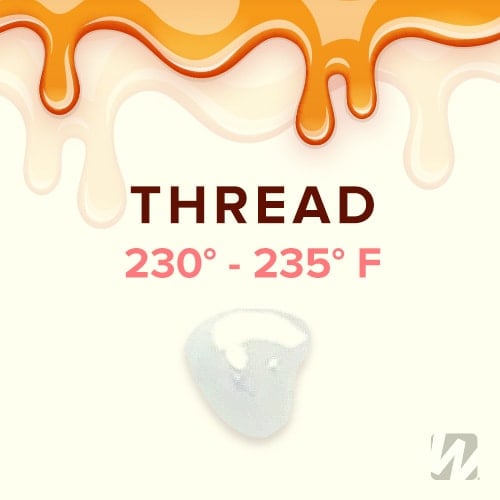
When sugar reaches the thread stage, it forms web-like strands when dripped 2” above the pot. It will still have a thin and watery consistency.
What Temperature Is Thread Stage?
The thread stage begins at 230 degrees Fahrenheit (106 degrees Celsius).
Thread Stage Candy:
Thread stage sugar can be used for making sugar syrups, fruit liqueurs, and jellies.
2. Soft Ball
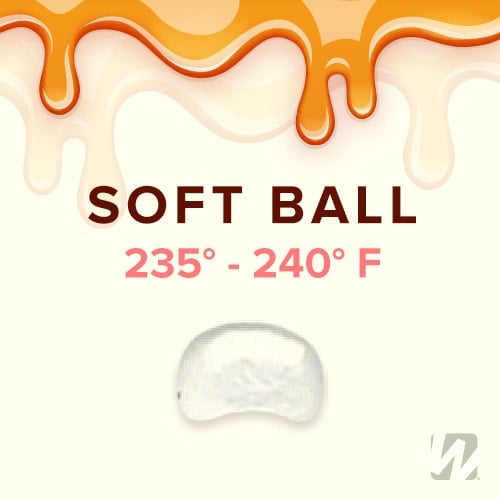
The thread stage is followed directly by the soft ball stage. To test your candy temperature, you’ll want a bowl of cool water to drip the sugar into. You’ll know you’ve reached the soft ball stage when the sugar forms a small ball in the water. The ball will quickly flatten after a few moments of handling as it warms in your hand.
What Temperature Is Soft Ball Stage?
The soft ball candy stage begins at 235 degrees Fahrenheit (112 degrees Celsius).
Soft Ball Stage Candy:
You can stop at the candy soft ball stage when making fudge, fondant, pralines, buttercreams, and meringues.
3. Firm Ball

The firm ball stage follows the soft ball stage in the candy-making process. At this temperature, sugar creates a solid ball when dripped into chilled water. This ball can be flattened with some pressure when squished between your fingers.
What Temperature Is Firm Ball Stage?
The firm ball stage forms at 245 degrees Fahrenheit (118 degrees Celsius).
Firm Ball Stage Candy:
The firm ball candy stage is perfect for making creamy caramel candies.
4. Hard Ball
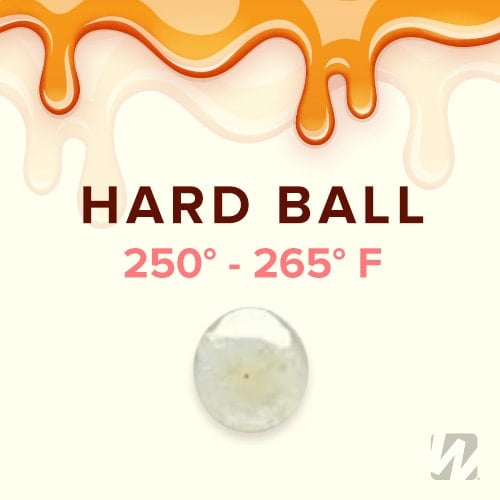
In the candy hard ball stage, heated sugar creates rope-like strands when dripped into water. Once in the water, the sugar will form a solid small ball that is pliable and can be squeezed or pulled.
What Temperature Is Hard Ball Stage?
The hard ball candy stage forms at 250 degrees Fahrenheit (121 degrees Celsius).
Hard Ball Stage Candy:
At the hard ball stage, you can prepare marshmallows, toffee, nougat, rock candy, and gummy candy.
Firm Ball vs Hard Ball
The difference between the firm ball and hard ball candy stage is that in the firm ball stage, sugar can be flattened with some pressure between the fingers while it requires a bit more effort in the hard ball stage. The firm ball stage is used for creamy candies while the hard ball stage can be used to make gummy candies.
5. Soft Crack
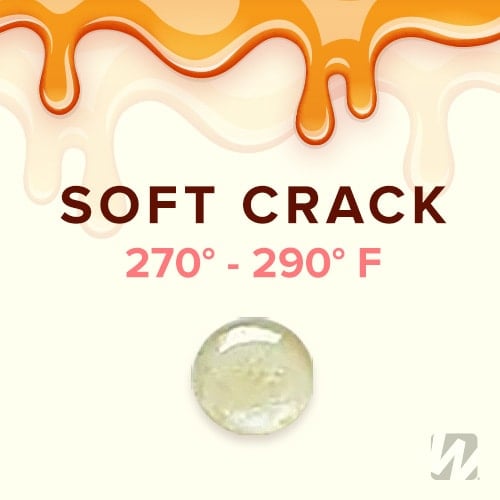
You’ll see the soft crack candy stage begin with the appearance of small bubbles rising to the surface of the sugar. At this stage, the sugar will separate into brittle threads that bend slightly before breaking when handled.
What Temperature Is Soft Crack Stage?
The candy soft crack stage begins at 270 degrees Fahrenheit (132 degrees Celsius).
Soft Crack Stage Candy:
The soft crack stage is perfect for making delicious butterscotch, taffy, and candy apples.
Hard Ball vs Soft Crack
The difference between the hard ball and soft crack candy stage is that sugar is still rather pliable in the hard ball stage while it will bend and break in the soft crack stage. You can make soft candies, like marshmallows and toffee, with the hard ball stage and tougher candies, like taffy and candy apples, in the soft crack stage.
6. Hard Crack
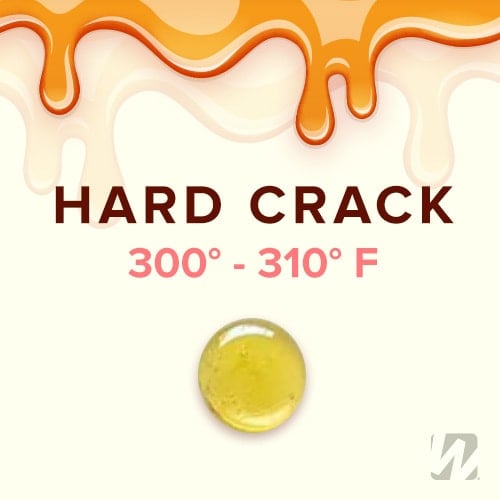
In the hard crack candy stage, sugar will spread into brittle threads in the cool water. When handled, these threads will snap easily.
What Temperature Is Hard Crack Stage?
The candy hard crack stage takes shape around 300 degrees Fahrenheit (149 degrees Celcius).
Hard Crack Stage Candy:
You can make hard candies like lollipops and brittle once you reach the hard crack stage.
Soft Crack vs Hard Crack
The difference between the soft crack and hard crack candy stage is that, while you can bend sugar in the soft crack stage before it breaks, candy in the hard crack stage snaps quite easily when force is applied. The soft crack stage is used for semi-tough candies like taffy and butterscotch, while the hard crack stage can be used to make hard candies, such as lollipops and brittle.
7. Light Caramel
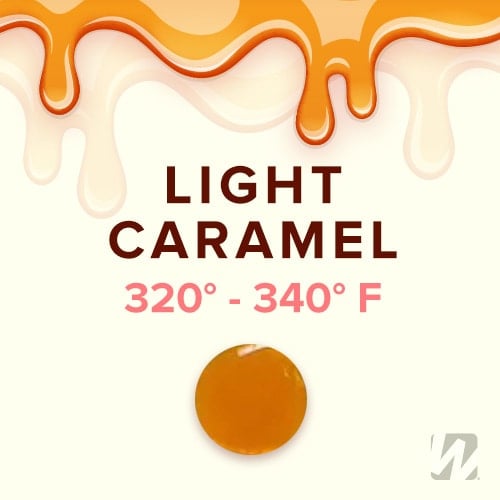
As the sugar warms into the candy light caramel stage, it will develop a light golden brown hue. When dropped into cold water, the sugar will form a solid chunk that requires some effort to snap.
What Temperature Is Light Caramel Stage?
Light caramel will form at 320 degrees Fahrenheit (160 degrees Celcius).
Light Caramel Stage Candy:
You can stop at the light caramel candy stage if you are preparing flan or making caramel cages for a stunning visual presentation.
8. Dark Caramel
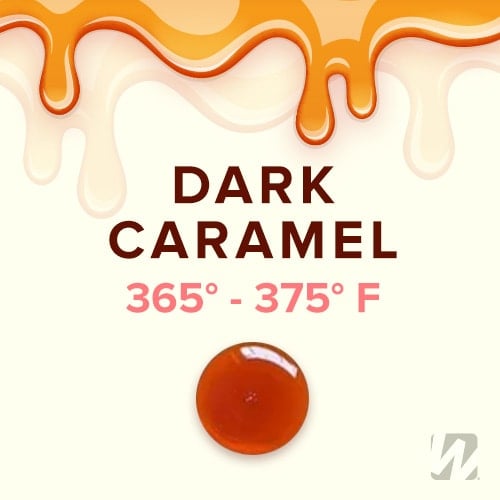
As light caramel will turn to dark caramel, the firm chunk that forms in cool water will turn a dark amber color. The sugar should be removed from the heat at this stage or it will be prone to burning.
What Temperature Is Dark Caramel Stage?
Dark caramel forms at 340 degrees Fahrenheit (171 degrees Celcius).
Light Caramel Stage Candy:
The dark caramel candy stage is excellent for making caramel sauce and treacle, often used in British treats.
Dark Caramel vs Light Caramel
The difference between light caramel and dark caramel is mainly in color and flavor. Dark caramel will have a dark amber color with a reddish hue and a slightly more bitter taste than light caramel.
Candy Temperatures Chart
Use this sugar temperature chart to prepare an array of sweet treats for your candy shop.
Testing Your Candy Thermometer
To ensure that you achieve the desired results with your candy sugar, you’ll want to make sure that it is reaching the appropriate temperature. Use the following steps to learn how to test your candy thermometer with the boiling water test:
- Insert your candy thermometer in a pot of water so it does not touch the sides or bottom if the pot.
- Bring the water to a boil.
- Leave the thermometer in the boiling water for 5 minutes.
- Check the temperature, the thermometer should read 212 degrees Fahrenheit (100 degrees Celcius). Water starts boiling at this temperature if your location is at sea level.
- If your thermometer is accurate, you can begin your candy-making process.
- If the reading is higher than 212 degrees Fahrenheit, you’ll want to adjust the temperatures in the recipe to reflect the discrepancy.
High Altitude Candy Making
Because of the lower atmospheric pressure at 3,500 feet above sea level, bakers and confectioners are required to make certain adjustments for high-altitude cooking. The boiling temperature of the water will be lower at higher altitudes, so you can either use the five-minute boiling water test listed above or make a few calculations.
To adjust your candy-making temperature for high altitude, subtract 2 degrees Fahrenheit for every 1,000 ft (300 m) above sea level. For Celsius, subtract 1 degree for every 900 ft (2743.3 m) in elevation.
Get your candy business off the ground by mastering the fundamentals of candy temperatures. Use our candy temperature chart in your shop to help your staff prepare stunning and delicious candy and dessert options with ease.

